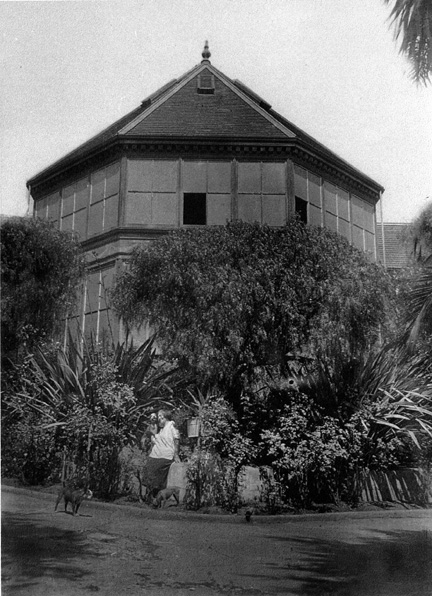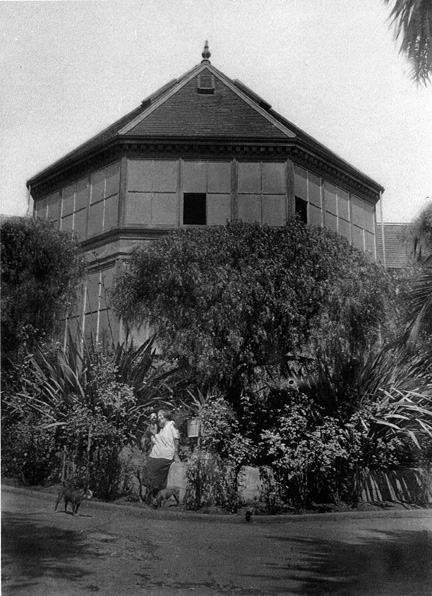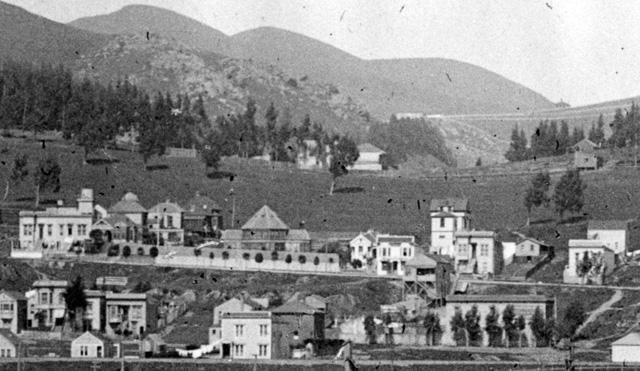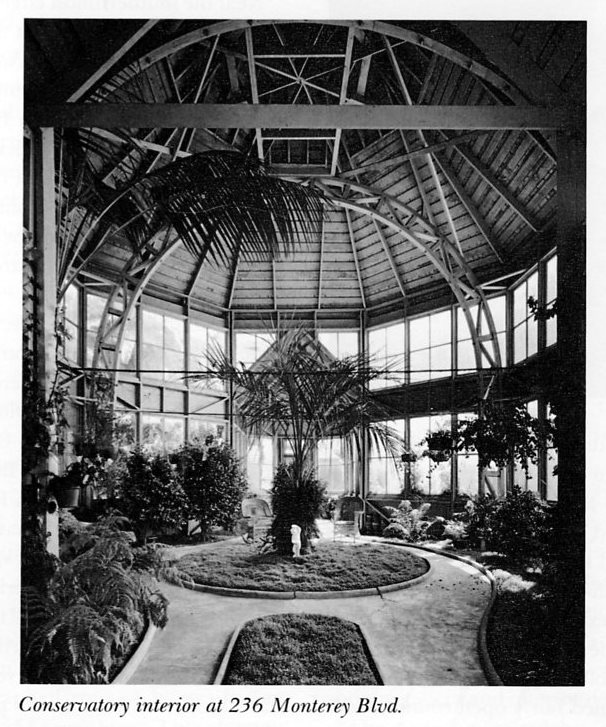Sunnyside Conservatory
Sunnyside Conservatory
Excerpts from the history written by Thomas Malim in 1976. Raised across the street from the Sunnsyide Conservatory, (pictured here in 1919 when purchased by the Van Becks) he worked successfully with Ken Hoegger and Greg Gaar to get the property restored and declared a city landmark. The .19 acre conservatory site was purchased with money from the Open Space Fund for $226,000 in 1980. Another $200,000 was allocated for restoration, landscaping, and installation of an irrigation system. Dry rot and scale had so destroyed the wood in the building that restoration quickly turned into reconstruction. The partially finished replica of Sunnyside Conservatory’s octagonal redwood structure was completed in 1986. Today the grounds are covered with exotic cloud and rain forest plants surrounded by grand palms, many from Merralls’ original planting. (Photo courtesy Friends of Sunnyside Conservatory.)
Description
The property on which The Conservatory is located was purchased in 1891 form the Sunnyside Land Company, by a Mr. and Mrs. H. Taylor. The property consisted of seven lots, with a total frontage of 175 feet on Sunnyside Avenue. Sometime between 1891 and 1893, Mr. Taylor built his own Victorian style house at what is now known as 230 Sunnyside Avenue. In 1898, Mr. Taylor sold the property to W.A. Merralls, a mining engineer and inventor of international repute. It is not known when the Conservatory was constructed, but it was done while the property was owned by Merralls, who was killed in a train accident in 1914. The cost of the structures was $7,000. The Conservatory was built and landscaped within so as to be an extension of the outer grounds. Mr. Merralls had plants placed inside the Conservatory which complemented and were compatible with those on the outside. Practically all the trees and plants on the exterior grounds and within The Conservatory which remain today are those originally planted by Merralls. Concrete walkways were laid inside the Conservatory, and a concrete driveway entered the east side of the property, and wound around the Conservatory to a parking area at the rear of the house. (Interior view below in 1968)
Merralls, having invented a gas engine, no doubt owned one of the new-famgled horseless carriages of the time. He designed and built an observatory at the rear of the house which could rotate a full 360 degrees on steel balls. His other inventions included a ventilation system for the New York City subway system and “The Merralls Safety Areoplane Manufacturing Company.” The latter consisted of a balloon encased in a frame of bamboo webbing, to which was attached a gondola which supported four 75 horsepower gasoline engines. When he died, the newspapers printed Mr. Merralls obituary on the front page and made note of the fact that the world had lost an inventive genius, and one of the great mechanical minds of all time. Mr. Merralls’ widow and son stayed on the property until 1916 when the bank foreclosed on it. The property lay vacant and overgrown until it was purchased by Mr. and Mrs. Ernest Van Beck in 1919. It was only by accident that they discovered The Conservatory and realised the extent of their holdings. Mr. Van Beck enlisted the aid of the proper craftsmen, cleared the grounds and returned them and The Conservatory to their previous appearance until his death in 1952. Mrs. Van Beck sold the eastern most lot to the Andersons where they built their home at what is now 234 Monterey Boulevard. In 1970, the Andersons purchased the remainder of the property. After his death in 1973, the Sunnyside Neighborhood Association succeeded in getting the Conservatory landmark status on September 21, 1975. (Photo courtesy private collection.)





